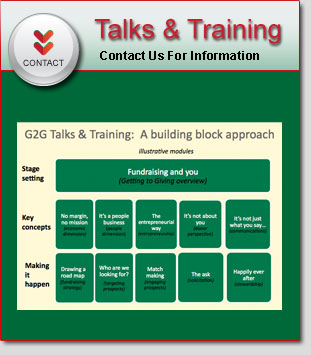There has been a lot of work on that problem over the past few decades, but there still is no agreement on a common set of financial and social metrics for nonprofit organizations, and it can be somewhat fad-like. Here are some things to consider.
Does this look familiar?
Many nonprofits are reluctant are reluctant to deal with performance in an open and transparent way, for fear of being punished. That reflects the tendency to think of measurement as purely an evaluative tool, when learning is an equally if not more important goal. You try something, see if it works, and make mid-course corrections as needed.
Metrics are better treated as hypotheses than answers. And, if you haven’t established a falsifiable hypothesis, the metric is pretty useless.
Here’s one example: “We create leaders.” How do you define “leader”? Or, let’s say your project is aimed at improving coffee agriculture in Ghana by improving transportation infrastructure. If coffee sales improve, you’re happy to take the credit. Maybe, or maybe it was a frost that ruined crops in Brazil that did it.
Rule #1 is to start with your mission. Figuring out measures that are feasible is the real trick; some simply aren’t.
For example, how do you measure Harvard? You could count the number of academic papers published, and whether they were cited in other people’s work. But, in reality, Harvard is about generating big ideas and developing students who change the world. You have to look for pieces of the mission that are measurable.
The time frame and type of measurement will depend on the problem that you are trying to solve.
For a social service agency, helping a kid out of poverty is a 15 year problem. For a land conservation group, buying a piece of land is a 3 month problem, but stewarding it after the purchase is at least a 15 year problem. Too long a timeframe can be meaningless, but too short a timeframe can be misleading.
For an international development agency working to provide clean drinking water, the number of wells that get dug seems a reasonable metric. But, the pumps typically break down after three years or sometimes are stolen; some attention to infrastructure and follow up is needed too.
Another complication: many of the issues being addressed by nonprofits are systemic problems.
It gets back to the question of whether you are able to separate the variables. There can be many factors in developing leadership, for example, as Management Leadership for Tomorrow (MLT) demonstrates.
MLT’s vision is a nation where high potential under-represented minorities represent a critical mass of senior leaders in key sectors that drive our economy. Its multi-dimensional programming extends beyond the classroom, and puts minorities on the fast-track to success at every stage of their careers.
Each element of its talent development system has clear outcome measures, as shown below. MLT also recognizes that a break in any one of the steps can be a problem. It’s not a case of A + B + C, but rather A X B X C. (For more information about MLT, see http://www.ml4t.org/)
There are some important prerequisites to being able to develop and implement a useful performance measurement system.
It starts with leadership – including board members and executive directors – committed to the purpose and process of measurement. You also need a strong sense of strategic direction, and the ability to collect and analyze the right data.
Yes, performance measurement can be challenging. But, it is vital to performing your mission, and satisfying your donors that you are worthy of their investment.





